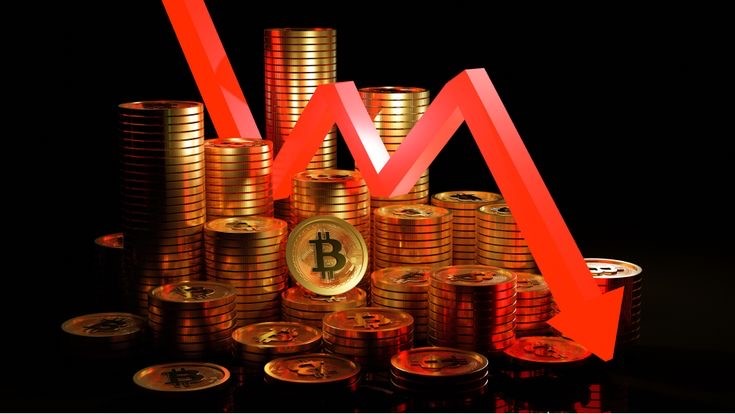In the tumultuous realm of finance, the scorching debate over negative interest rates has set the financial world ablaze. With central banks across the globe wielding this unconventional monetary weapon, passionate arguments ignite over whether it’s a powerful spark for investment and economic prosperity or a lurking threat to savers and the fundamental pillars of our financial systems.
When central banks set their policy rates lower than the frightening zero level, negative interest rates result. To put it plainly, this means that commercial banks are essentially punished for hiding their surplus funds inside the secure vaults of the central bank. This unconventional monetary policy’s main objective is to induce banks to lend more freely while enticing depositors to spend or invest their money rather than stashing it away in deep savings accounts.
Think of negative interest rates as an irresistible siren’s song for borrowers. In a world where interest rates plummet to unprecedented d depths, banks might be tempted to offer loans at astonishingly low rates, essentially paying borrowers to take the leap. This tantalising proposition can breathe vitality into business investments and ignite consumer spending, thus propelling economic growth into uncharted territory.

In essence, negative interest rates might be compared to a financial conundrum that upends the conventional banking paradigm while potentially fostering economic dynamism. A severe currency war might start when interest rates are negative. When a country’s central bank steps into the territory of negative rates, it may cause a storm of currency devaluation. A country’s goods and services become enticingly appealing to foreign markets as a result of the native currency’s decline, which turns the global economic stage into an exciting conflict. This in turn feeds the fires of global intrigue and economic expansion.
Lower interest rates frequently stir off a speculative frenzy that sends stock and real estate prices to dizzying new heights. This mesmerising phenomena creates a false sense of prosperity, encouraging people to part with their money and invest zealously in these alluring goods. It’s a financial tornado that will inevitably pull you into its exhilarating vortex.
Negative interest rates deal pension funds and savers nothing short of a crushing blow. The nest eggs that people have diligently constructed are slowly but relentlessly being eroded when banks impose these negative rates on their clients. The consequences are downright chilling, painting a bleak picture of a future where saving feels like a futile endeavour, casting a long and ominous shadow of financial insecurity.
Chronically low or negative interest rates are so persistent that it is dangerously possible for our financial system’s core foundation to become unstable. Banks that are suffering from a lack of profitability may turn to risky lending practises in an effort to make up for their losses. This financial balancing act might have disastrous effects on the overall economic structure.

Negative interest rates can unleash a storm of unpredictable repercussions. Unintended outcomes, including reckless risk-taking and the inflation of asset bubbles, hover ominously on the economic horizon, poised to potentially trigger financial earthquakes in the not-so-distant future. Central banks now stand at a crossroads fraught with peril, where they must deftly balance the scales, considering both the advantages and treacherous pitfalls of negative interest rates. While these rates have the power to release the economic genie from its bottle, their prolonged use could very well open a Pandora’s box of unforeseen challenges, casting a shadow of uncertainty over the livelihoods of savers and the stability of financial institutions. It’s a high-stakes tightrope walk that keeps the financial world on edge.
A flashpoint for debate and an unconventional monetary bludgeon, negative interest rates are emerging. It’s a hotly contested question that depends not just on the economic environment but also on the very heart of our financial destiny. They either act as a dynamo sparking investment or as a looming spectre of financial Armageddon. In order to bravely traverse the perilous waters of negative interest rates, central banks must strike a tenuous balance between boosting economic development and protecting the fortress of financial stability. Economic brinkmanship is a high-stakes game that keeps the financial world on edge, and opinions on its usefulness are as varied as the markets themselves.
Negative interest rates, woven into the grand tapestry of finance, shall remain a subject of perpetual debate and scrutiny. As the ever-shifting economic landscapes play out, central banks find themselves in a delicate dance, a balancing act that requires them to protect the interests of both borrowers and savers, all the while maintaining the delicate equilibrium of the intricate financial ecosystem. It’s a multifaceted challenge that ensures the enduring relevance of these rates as a contentious pillar in the realm of monetary policy.
Sources
- https://www.bis.org/publ/cgfs61.pdf
- https://www.investopedia.com/articles/investing/070915/how-negative-interest-rateswork.asp#:~:text=Risks%20of%20Negative%20Interest%20Rates&text=Because%20banks%20have%20certain%20assets,actually%20willing%20to%20lend%20less.
- https://m.economictimes.com/markets/stocks/news/tug-of-war-the-disagreement-between-stock-market-and-monetary-policymakers/amp_articleshow/98561575.cms
- https://corporatefinanceinstitute.com/resources/economics/negative-interest-rates/#:~:text=Negative%20interest%20rates%20reduce%20the,decrease%20lending%20as%20profitability%20decreases.




